Hugo and the History of the Movies (Part I)
This was originally going to be my 1,000th post. I was thinking of something to write up, and saw that the article I wrote about my favorite moments from the film was getting a ridiculous amount of traffic as compared to everything else (I guess because of the HD screenshots), so I figured, “Well, that would be fun to talk about how the film relates to film history and all of that, plus I can throw in a lot of screenshots, and make it like those Tron articles (which still get by far the most views on the blog, because people just link to all the pictures).” Basically — fun, and a calculated risk to boost traffic. Because if you can, why not?
So my plan was to write up an article with screenshots about, as the title says, Hugo and the history of the movies. Only, with me, nothing is ever that simple. I started watching the film again (third time now) and then my film student brain turned on, and I started noticing all these great moments, which turned into a whole film analysis, and — it became a whole thing. I can never contain myself to just one article. Ever.
Anyway, here’s part one of me talking about Hugo and its use of and reliance upon the history of movies (as well as some other stuff. Mostly about how Martin Scorsese is a genius).
First, the opening image of the film. This is the moment, as I say every time I talk about this film, where my mouth literally fell open and I stared at the screen in awe. What this movie accomplishes with 3D in the first sixty seconds is more than every other 3D film made since and including Avatar combined.
We start with the gears of a clock moving, which then fade into a graphic match of Paris and the Arc de Triomphe. It is just brilliant. Even in 2D. Here are a brief series of images that get the point across (but not as well as seeing it happen before your eyes does):
Then we pan to the right, past the Eiffel Tower (letting you know this is Paris), and over to the train station where nearly the entire film will be taking place. (We also time lapse here in a wonderfully subtle way, from night to day.)
After establishing that, we cut to behind the train station, where we get another one of those masterful Scorsese tracking shots. Only this one is purely expositional. And that’s why I wanted to talk about it. This single tracking shot, and what follows it, are, without one single line of dialogue, laying out every single piece of information you need to know about the film and are also laying out the film’s story. It’s wonderful.
We start from the air, the Eiffel Tower in the background, letting us know where we are in relation to the previous shot (not to mention the train station being our focal point anyway), and then move down, toward the train station and the train yard out back.
And we continue down onto the tracks and between the trains, onto the platform and into the station.
We move swiftly past all the stuff happening on the tracks, mostly because all of the people (and possibly even the trains) are computer-generated.
However, even though it’s pretty clear none of these people are real, the shot itself is quite extraordinary. We began in the sky, looking down at this station, and here we are, inside it and along the tracks. Which is when the film provides a nice little in-camera trick of cutting from CG to live-action. It’s one of those moments that’s obvious if you’re paying attention, but even though you catch it, you go, “Oh, yeah, that’s nice work,” since you are creating the illusion of a continuous take and using an obvious (and in this case, literal) smokescreen to mask your cut. There are not many ways to really do this convincingly, and this film finds a really practical way to do its masking.
As we pass up the tracks, a big cloud of smoke from the trains appears and we move through it.
And when we emerge out the other side of it — we’re onto the actual set of the train station that was built for the film, with real actors, real props, real just about everything.
And then we continue (because remember, this has all been a “continuous” shot) through the station. Here’s where Marty starts to have fun with it. Because in these tracking shots, once you have the movement planned, then it becomes about “what else can we do to liven it up?” And you see him start to throw as many moving people and things in front of the camera as possible before it moves past. This one running couple is my favorite:
And then we pass underneath the middle section of the station where all the shops are between the tracks and the front of the station —
— and over to the clock on the front wall of the station —
— and up close to the face of the clock —
— where we meet our protagonist:
So we started all the way in the sky behind the station, and are now close-up right on Hugo’s face. Clocks/Paris, the station, the boy, his story. One shot.
And Howard Shore’s wonderful score kicks up once we get to Hugo’s face, too. Man, do I love this score:
Actually, if you listen to that track from the beginning and can picture the tracking shot, you can actually see the tracking shot happening in your mind (if you’re not watching the film, of course). The music kicks up about 75 seconds into the track.
What I love about it is that all of this has just happened in 75 seconds of film. The studio logos happen for 45 seconds, and then from 45 seconds to exactly 2 minutes (literally, they cut away from Hugo’s face at 2:01) are these shots. It’s magical. Here, we’ve laid down almost all of our visual exposition within 75 seconds. Now, the film is going to lay out our narrative exposition, all without saying a single word of dialogue. Check this out…
After the close-up of Hugo’s face, we cut to this shot, of his POV:
And now that we’re in his POV, we see what he sees as he looks around the station, which is going to be pretty much our entire cast of characters, and all of the stories that will populate the train station for the remainder of the film. First we see the Station Inspector (Sacha Baron Cohen) and his dog, Maximilian, who are, of course, the primary antagonists of the film:
And then we see Madame Emilie, proprietress of the café (played by Frances de la Tour, who you’ll recognize best from Harry Potter, where she played Madame Maxine, the giant headmaster of Beauxbatons):
And then we see Lisette (played by the wonderful Emily Mortimer. Her second film with Scorsese, after Shutter Island), flower seller and love interest for Gustav, the Station Inspector:
Then we see Monsieur Frick, who runs the news stand (played by Richard Griffiths, who you’ll most certainly recognize as Uncle Vernon Dursley from the Harry Potter films), who is our primary love interest for Madame Emilie:
And then Monsieur Labisse, the bookseller (played by the wonderful Christopher Lee):
A side note — isn’t it terrific to see Christopher Lee in anything?
And we also get some shots of the café — musicians playing, people dancing, etc.
This is more to add to the flavor of the atmosphere. Music, coffee, dancing — Paris.
Also in this (which is a particularly Scorsese touch) café are people meant to be Django Reinhardt, Salvador Dali and James Joyce (gotta love how Marty and Woody both used the same references). We don’t see them until later, when Hugo is being chased by the Station Inspector and runs through the café, but here are their pictures, in case you missed them:
So right there, we are introduced to all of our major characters who pertain solely to the train station. We never (well, not until the very end) see them outside of this location, and for us, they exist solely within it. And since at this moment in time, all we (and Hugo) know is the station, these are our primary characters for the story. Not to mention, they are pretty much our main characters for the first half of the film.
In 30 seconds, we’ve basically just covered the entire basic premise of the film. Of course, the film will further develop all of this later, but considering we’re only 2 minutes into the actual film, and not one word of dialogue has been spoken (we’ve heard people talking, but none of it was official “dialogue”), we’ve been given quite a tremendous amount of information in a swift and concise matter (befitting of a master like Scorsese).
Now here’s when the film gets really interesting in its exposition. This is what made me want to point it out here.
Hugo leaves the clock (remember, he was at the one at the front wall of the station, overlooking everything) to travel through the walls of the train station somewhere else. This traveling is done again in a single tracking shot, as Hugo goes down a ladder, up a pathway, through a door, down a coal chute, through some grates, through the giant moving gears of a clock, up another staircase, down a corridor, and finally behind the face of another clock.
Here are a series of all of those movements, just because I didn’t want to write in between this time:
Several things to note about this shot — aside from the fact that it’s all one continuous take. First: it establishes space. This is Hugo’s world. He lives within the walls of the train station. He knows how to move about. Second: it’s lively and makes it fun and adventurous for children. Even as an adult (technically), I loved the idea of sliding down the ladder, climbing through the clock and sliding down the coal chute. That’s great fun. Third: It shows off the 3D and gets you acclimated to it. In all of these shots inside the walls, this is really where the 3D works its magic. And you get to see just what good 3D is and how it can create and enhance an environment. Fourth: It shows off the great camerawork of the film. Watch how the camera moves throughout this shot, particularly in relation to the ladder. There’s a reason Robert Richardson won the Oscar for Cinematography. (The Tree of Life was gorgeous, but this film was gorgeous and did tremendous things with the camera.)
This shot also accomplishes one other thing in relation to the narrative, which I will explain once we get to the final portion of the shot, which is Hugo’s destination.
Hugo moves through the walls, and the film is doing all these great things, but we’ve yet to talk about why it’s happening from a narrative perspective. Why is Hugo moving through the walls? Because he’s going to look at the old man who runs the toy booth:
This is, of course, Georges Méliès (note the placement of the accents. People always spell it incorrectly), whose importance as a character in the film we’ll talk about later. Now, I just want to talk about this series of shots and its relation to the narrative and how wonderful it lays out exposition.
So we see Hugo looking down at this old man in the toy booth, and at this point, within the world of the film, we have no idea who he is. He’s just an old man in a toy booth.
And we get this brilliant image of Méliès looking up at the clock, knowing Hugo is there. Or rather — knowing the thief who’s been stealing things from his shop is there.
And we also get introduced (visually, of course, we won’t actually meet her until later) to Isabelle, Méliès’s goddaughter.
Now, what I loved most about these images, which began with Hugo leaving the front clock to go to this one, is that they visually mirror the narrative of the film, specifically the detour the narrative takes. At first it’s about this boy in the walls of the train station, trying to make sense of his life, and all these other characters who are tangentially a part of his life, and then moves away from that to what the story is really about — Georges Méliès and the history of the movies, and the importance of film preservation. If you knew nothing about this film going in, that’s what you’d take out of it, that, “It’s about this kid in the alls of a train station, trying to fix a mechanical robot, but then it’s really about the history of movies.” And the first four minutes of this film, without a word of dialogue — conveys all of that completely visually, introduces us to all of the central characters in the film (and in fact, all characters in the film, save four, two of whom are dead when the story begins and are only seen in flashback, and the other two being Mama Jeanne and Rene Tabard (who are more a part of the Méliès storyline and won’t be central to the story until much later)), lays down all of the exposition you pretty much need, and does some beautiful tricks with 3D and framing and camera movement to boot. It’s brilliant. Absolutely brilliant.
I seriously wonder how now one else can be this clever with their exposition. It’s not that difficult. You watch all these lazy, terrible films using voiceover or really terrible exposition in their opening scenes, meanwhile here, Scorsese doesn’t use a single word of dialogue (the first line spoken in the film is Méliès going, “Got you!” as he grabs Hugo) and not only conveys to you everything you need to know about the basic premise of the film, but even shows you the central conceit of the narrative shift! In three-and-a-half minutes!
I’m already down the road, so let’s take it all the way until the title card. I’m here to talk about this film and how it uses the history of the movies, but I just want to keep going through it, because it’s so much fun.
So Hugo sees Méliès seemingly fall asleep at his booth (even though we know, from that shot of Méliès’s eye wandering up to the clock, that he knows Hugo is up there), and comes down to get another piece from the shop. We don’t know why he’s doing this, but as we’ll find out later it’s so he can finish fixing the automaton that he believes will help him “fix” himself after the death of his father.
And then Méliès catches him, tells him he knows he’s been stealing from him and makes Hugo empty his pockets. And he sees Hugo’s notebook, with the sketches of the automaton, which he then recognizes as his own. Which — I loved that moment. Watch it again on a second viewing, you’ll see how great Ben Kingsley’s reaction is to seeing it:
And he takes the book from Hugo and tells him to go away (I love how painful it is for him, too). It’s actually a very complicated moment. Here he is, seemingly just catching a thief who’s been stealing parts from his shop (which he figures the kid won’t even know what to do with anyway), then being reminded of this past that he’s tried so hard to forget, and being upset with the kid for making him relive that pain again.
Watch the moment where he asks Hugo if he made the drawings in the book. It’s great. He asks Hugo, Hugo doesn’t tell him, and then he tells him to leave. Hugo asks for his book back, and Kingsley just says, “It is no longer your notebook, it is my notebook and I’ll do with it what I like! Maybe I’ll just burn it!” And Hugo says, “No!”, and Kingsley goes, “Then tell me who did the drawings!”, which is in that shot up there. And then they have this staredown for a second, and Kingsley realizes he’s just been shouting at and threatening this kid.
So he lets go and tells Hugo to leave. And that’s when the Station Inspector hears him shout and sends Maximilian to go track down the thief. And then we get that chase scene, which is mostly meant to be humorous for the kids. It works. It’s a nice little chase, and we get to see Sacha Baron Cohen doing what his character is meant to do — be comically foiled by Hugo. With the leg being caught on the train, tripping and falling over everyone, the brief nut shot on the suitcase. It’s standard children’s movie stuff. And we get a great deadpan reaction from the dog:
Plus we also get this great shot, which was just gorgeous in 3D:
Then Hugo returns to walls and the clocks. And he goes to work. Here’s where we get to see him at his job — winding the clocks.
It’s another moment where they get to use 3D to enhance the environment. Those clocks really do lend themselves well to 3D.
Then, as he winds the clock, Hugo catches a glimpse out the window at the Eiffel Tower, and stares out the window, wondering if his life will ever make sense, if he’ll ever “work” again.
And we go from his face looking out the window, back out of the train station and back up to the sky, basically reversing the same camera angle that took us into the train station at the start of the film, as the title card comes up. So right there, we basically have a 12-minute short film about exposition. It’s wonderfully mirrored at the beginning and end with the same camera motion (forward and then back again). We start in the sky, swoop in to this one specific story, learn about the story, and then go back into the sky, with a new perspective on this train station from when we saw it the first time. That’s storytelling. (I mean that in the sense of “that’s storytelling” and in the sense of — that is, literally, what storytelling is.)
You’ll also notice that Scorsese has, over the years, taken to — Goodfellas and The Departed are the two films that immediately spring to mind — not putting up his title card until he’s laid out all the exposition he feels you need to get into the film. In The Departed, it’s something like 16 minutes before the card pops up. And in that 16 minutes we get all the exposition of the film (watch it again, you’ll see what I mean). In Goodfellas, it’s almost immediate. They’re in the car, Billy Bats is in the trunk, “What the fuck is that?”, they go out, see him in the trunk, and Tommy stabs him. And we freeze on Henry’s face — “As far back as I can remember, I always wanted to be a gangster.” And boom — title card. Here — we get our exposition in about 12 minutes. But in that twelve minutes, with really only one spoken-word scene (the chase being mostly chase), we got everything we needed, exposition-wise to get into the film. I love how he structured this whole thing. Here’s my story, here’s everything you need to know, and the little bow on the end, and then — title card. It’s almost him showing off how good he is. Not that I’m complaining, it’s great. At this point, I want to stand up and applaud when he puts his title card on. It’s like when a comedian does a really long bit and eventually brings it back to that punchline after ten minutes, and all you do is just stand up and applaud at the mastery of it all.
So that’s where I’ll leave you today, at Hugo‘s title card. Tomorrow, we’ll (hopefully…but knowing me, probably not) try to get into the actual history of the movies portion of this whole thing.








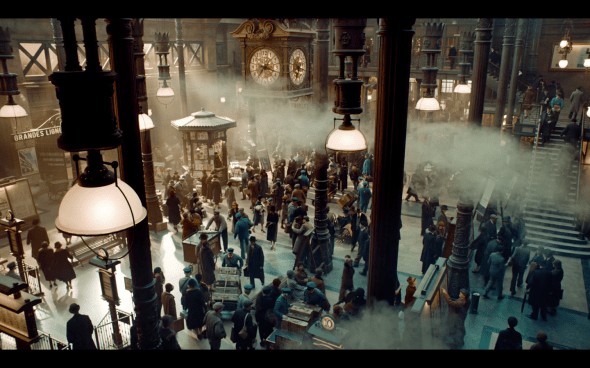


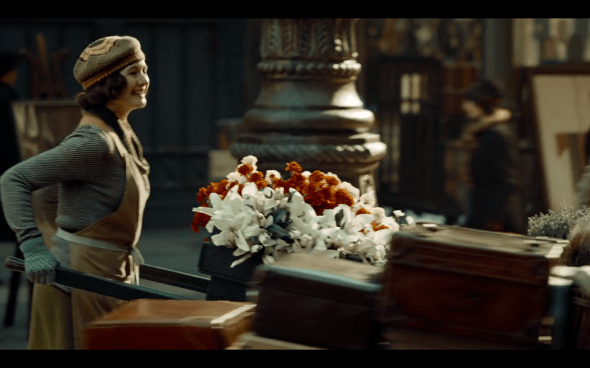
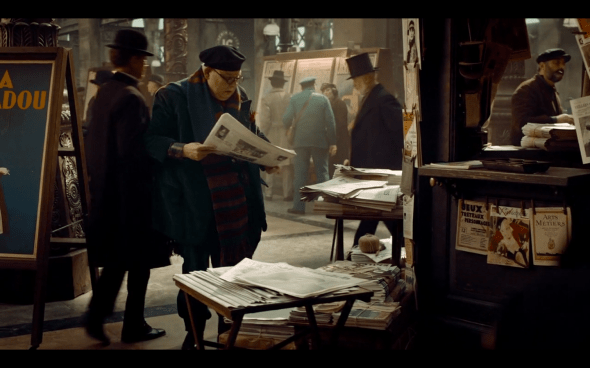


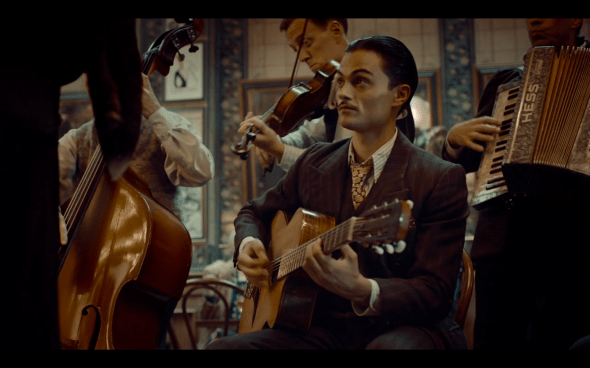

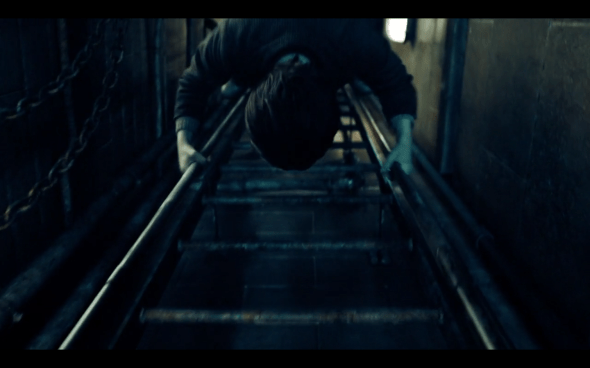
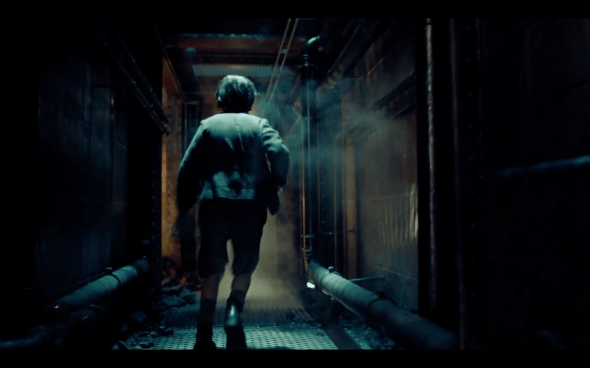
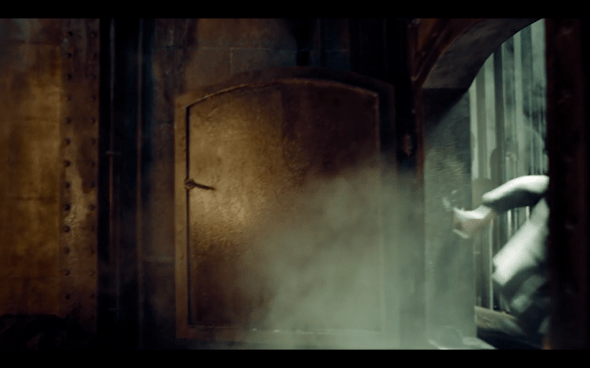

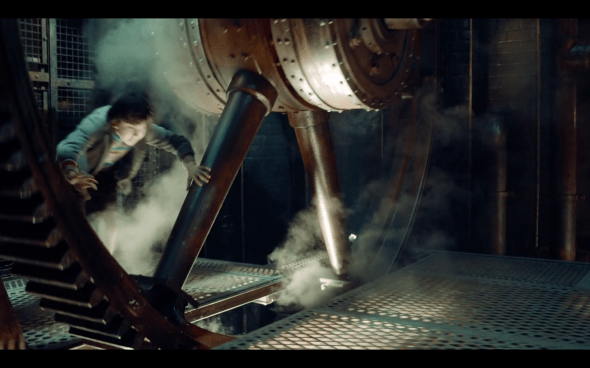

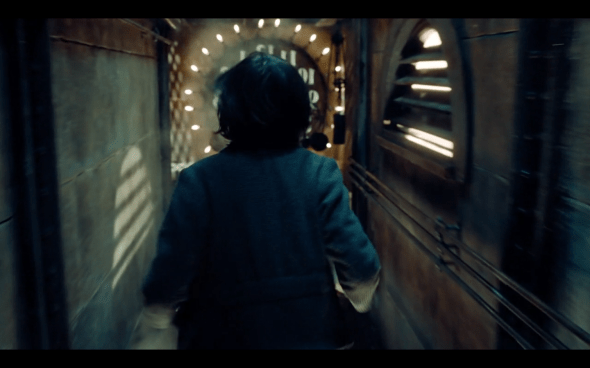
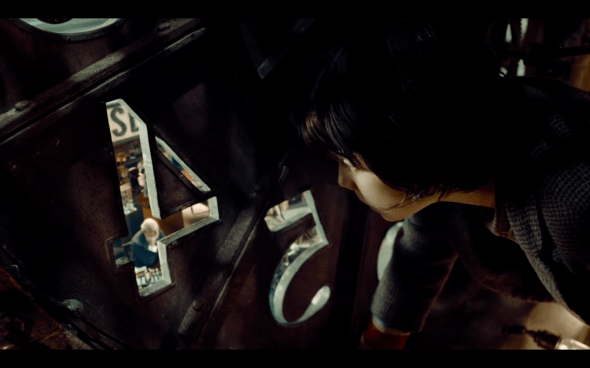

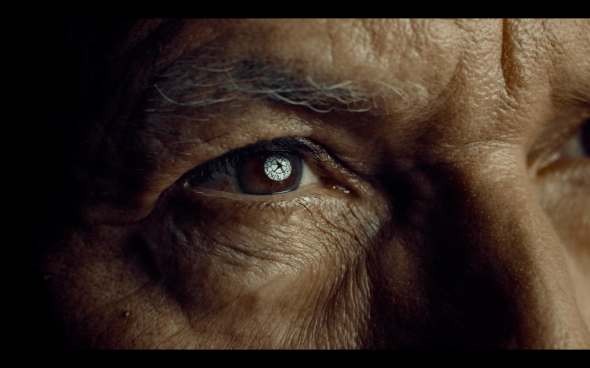

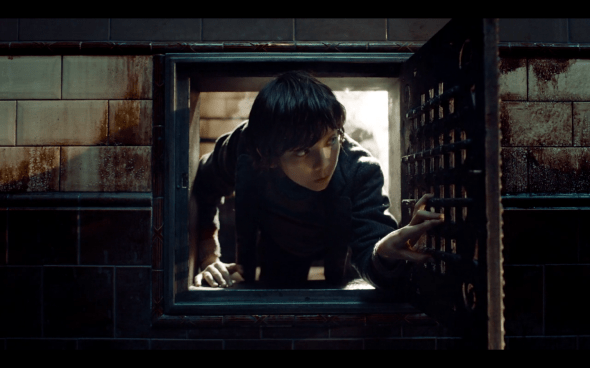
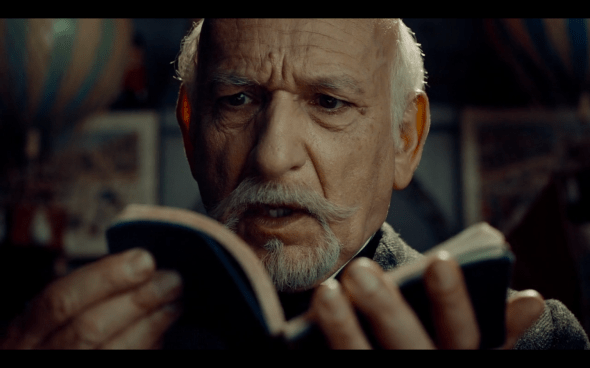
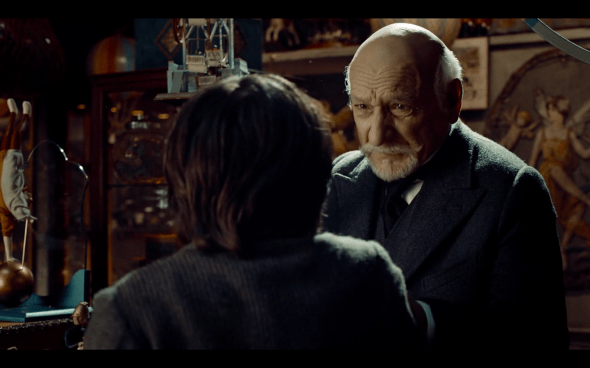


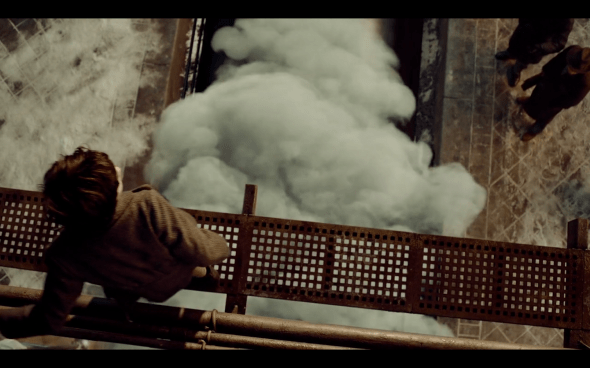




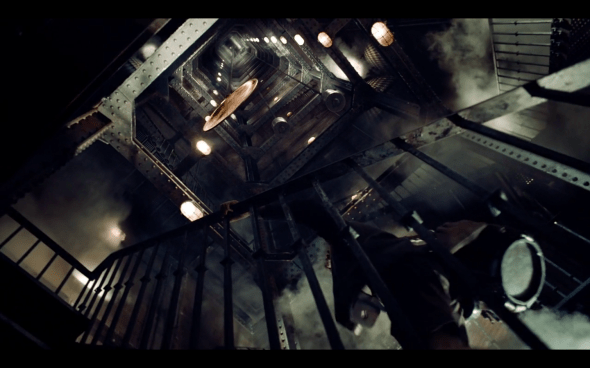




I appreciate your emphasis on how silent the opening sequence is. Obviously, an intentional throwback to the silent era that it’s paying homage to, but at the same time it’s just damn good narrative cinema, storytelling with visuals. Also, do you think the Cohen chase is just limited to children’s entertainment? I interpret that as yet another homage to the silent era, specifically the slapstick comedy of the likes of Charlie Chaplin and Buster Keaton.
March 7, 2012 at 6:21 pm
Just finished the film myself, finally. Even in “simple” 2D it was breathtakingly beautiful, and so inspiring to watch. Loved revisiting some of those beautiful shots here on your blog. Thank you!
July 8, 2012 at 11:41 am
Reblogged this on Exploring the Magic of Movies and commented:
There’s nobody who embodies the magic of movies better than Georges Méliès. I just got around to watching HUGO, and I’m so very glad I did. Looking for some visual inspiration (it’s perfect for steampunk fans like me, after all!), I stumbled onto this post from the B+ Movie Blog. The pictures along are beautiful enough that I wanted to share it with you. If you haven’t yet taken the time to see this movie, please do yourself a favor and see it.
July 8, 2012 at 11:44 am